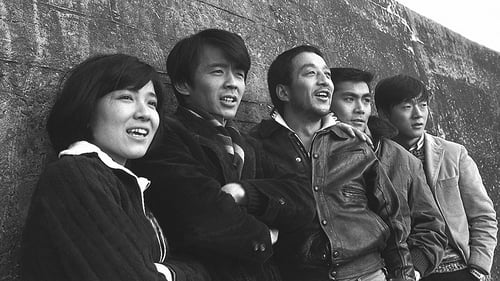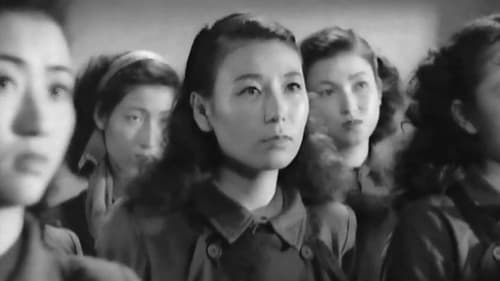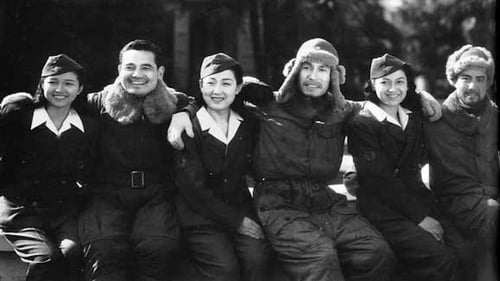
Art Direction
If You Were Young: Rage highlights the other side of post-war Japanese prosperity, focusing on the throngs of young people who missed out on the boom. We follow a group of young men that can't seem to get ahead, despite their willingness to try. Then one hits upon a plane - to work together to save for a dump truck and thus become independent contractors and be their own bosses at last. Ultimately life presents obstacles: jail for one, violence at the hands of the police for another and a girlfriend and subsequent children for the third. An early Kinji Fukasaku gem that imports the freewheeling style of the French New Wave and the hip detachment of American noir.

Art Direction
"Young People" is a story about the lives of four brothers and a sister, Sato. After the death of his parents, the older brother, Taro, who works in construction, decides to replace them. The second brother, Jiro, is a truck driver. The third, Saburo, is a student, dreams of a better future for the whole family are connected with him, with his career. Brothers and sisters are fighting to give him a higher education. And, finally, the youngest of the brothers, Suekichi, is also going to enter the university after graduation. The life of the Sato family is complicated. Taro is kind, but limited, not always able to find a common language with his brothers and sister Orie. The girl cannot stand the despotism of her brother, leaves her home and goes to work at the factory. With her departure, everything in the house goes upside down. Suekichi fails her university entrance exams, Orie is forced to return to her family.

Art Direction
Ayako, a young woman from a rural fishing village, is sold by her family into a brothel when her father takes ill. There, she is quickly stripped of her innocence and illusions.

Production Design
곤충 연구가인 한 교사가 표본 수집을 하기 위해 모래 지대를 돌아다니다, 지역 주민의 소개로 어느 여인이 혼자 사는 집에서 묵게 된다. 다음날 이 집을 떠나려 하던 그는 땅위로 올라갈 사다리가 없어진 것으로 보고 놀란다.
1964년 칸 영화제 수상작으로 인간의 실존적 조건을 예리하게 묘사한 작품이다. 아베 고보의 소설을 영화화 하였다.

Art Direction

Art Direction
A provincial bus driver plans to marry his conductress, but one night he glimpses the woman he once loved, which throws him into turmoil.

Art Direction
Story of a woman, Saiko, who divorces her doctor husband when she is given a baby by a stranger who claims it is the husband's child. Saiko embarks on an affair with her cousin's husband, but a crisis threatens when she discovers that her ex-husband is about to remarry.

Assistant Director
Story of a romance between a middle-aged journalist and a young woman.

Art Direction
Follows the life of Tsuru, the poor daughter of farmers in Shinshu, Japan.

Art Direction
Alongside Tokyo's Sumida River is a ragpickers' settlement known as Ant Village. One night, a young Catholic girl, Satoko Kitahara, who has been baptized under the name of Maria, comes to offer her services. However, Ant Village is not just an ordinary vagrants' community but a fine autonomous organization, and as the municipal authorities have long been demanding that the people of Ant Village leave the site, Satoko is utilized to publicize the Village and win public sympathy. While being utilized in this manner, Satoko is nevertheless glad to be able to help the people of Ant Village, especially the children, and when the summer vacation comes she decides to take the children on an excursion to Hakone. To raise funds for this purpose she becomes a rag-picker herself.

Art Direction
Five boys escape from their life of bondage on an island 10 miles off Hiroshima, and are picked up in the Inland Sea, drifting in an open boat.

Art Direction
In a military family, an illegitimate son is brutalized by his brothers. A patriarchal, feudalistic household where dissent is forbidden is used to reveal the whole imperialist system that afflicted Japan between 1921 and 1946. Winner of the Crystal Globe at the Karlovy Vary Film Festival.

Production Design
세 개의 각자 다른 이야기로 이루어진 영화. 외아들을 남겨둔 채 친정으로 돌아온 한 어머니의 이야기, 인정머리 없는 주인의 밑에서 하녀로 일하며 친척에게 돈을 빌리려 하는 미네의 이야기, 화류계를 떠나기로 마음먹은 기생 오리키와 그를 잊지 못하는 한 남자의 이야기가 차례로 펼쳐진다. 시네마준보가 그해 일본영화 1위로 뽑은 작품. (2013년 상반기 서울아트시네마 일본영화걸작 정기 무료상영회) 여류소설가 히구치 이치요의 단편소설 , , 등 3편을 원작으로 한다.

Art Direction
세키가와 히데오 감독. 1955년 제5회 베를린 영화제 장편영화상 수상작. 히로시마의 원폭 피해자들의 수기를 엮은 문집 '원폭의 아이, 히로시마의 소년소녀의 호소'를 바탕으로 영화화. 일본교직원조합 제작. 히로시마의 중고생, 교직원, 일반시민이 약 88,500명이 엑스트라로 참여했다고 한다.

Art Direction
Just before the end of the war, Japanese soldier Kitani is released from prison, having served his term for theft. Told in flashback, viewers learn about Kitani's past and reasons behind his prison sentence.

Art Direction

Production Design
The critical establishment was clearly not prepared to accept a woman's prison film featuring former prostitutes recovering from venereal diseases, unwanted pregnancies, and estranged lovers. With its cat fights, hysterical tantrums, film noir lighting, and dramatic music, White Beast is indicative of the new influences of the Hollywood psychological thriller on Naruse. Caged (John Cromwell, 1950) initiated a cycle of women's prison movies in the United States that may or may not have been shown in Japan, but the stylistics of White Beast draw on the same paranoid woman's films and film noir conventions that preceded the American cycle.

Art Direction
The story of an airport and its air traffic control crew in a remote and northern Japanese town. Three of the air traffic controllers are female with one of them working with her dead fiancé's sister. The engaged man had gone to war and never returned.

Art Direction
야심만만한 젊은 노(能) 배우 기타하치는 여행 도중 유명한 배우인 소잔에 대한 이야기를 듣는다. 소잔에 대한 궁금증이 생긴 기타하치는 직접 그를 만나지만 그에게 큰 모욕을 주고 만다. 이 일로 기타하치는 스승이자 양아버지인 겐자부로와 사이가 나빠지고, 그로부터 2년이 지난 뒤 소잔의 딸에 대한 안타까운 소식을 듣는다.













